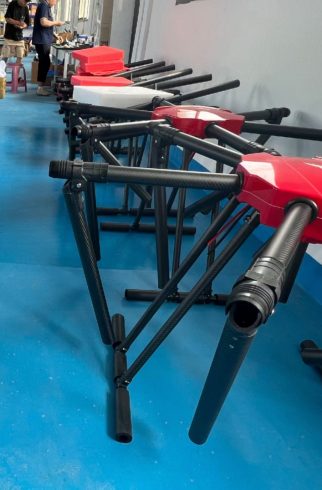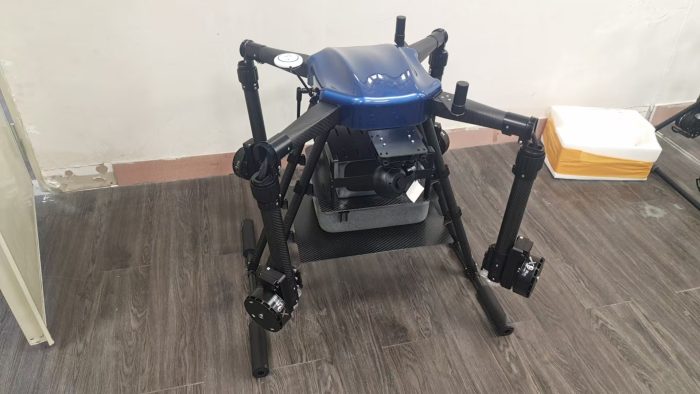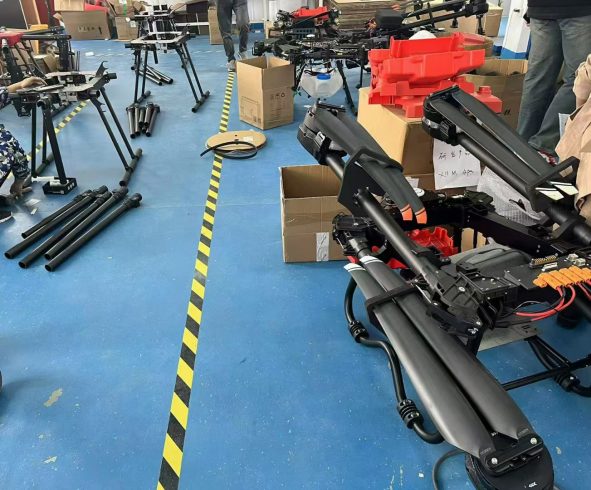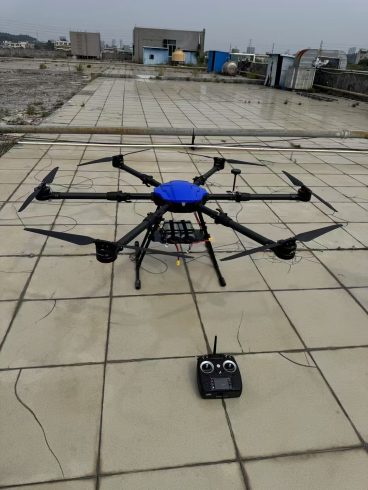![图片[1]-Drone Sprayers in Precision Viticulture: Revolutionizing Vineyard Management-msoen](https://www.msoen.com/wp-content/uploads/2025/04/164e113f97214114-576x1024.jpg)
![图片[2]-Drone Sprayers in Precision Viticulture: Revolutionizing Vineyard Management-msoen](https://www.msoen.com/wp-content/uploads/2025/04/4e0d9ec2ca214327-576x1024.jpg)
![图片[3]-Drone Sprayers in Precision Viticulture: Revolutionizing Vineyard Management-msoen](https://www.msoen.com/wp-content/uploads/2025/04/4e0da2d332214638-768x1024.jpg)
Vineyards, with their undulating terraces, intricate canopy structures, and delicate grapevines, demand a level of precision and care that traditional farming methods often struggle to deliver. Enter drone sprayers—a transformative force in precision viticulture. These aerial systems are redefining how vineyards monitor, protect, and nurture their crops, blending cutting-edge technology with sustainable practices. This article explores the role of drone sprayers in modern viticulture, highlighting their benefits, innovations, and the future of grape-growing.
The Unique Challenges of Vineyard Management
Viticulture presents distinct hurdles that demand tailored solutions:
- Sloped and Fragmented Terrain: Many premium vineyards are planted on steep hillsides to optimize sun exposure, complicating access for ground machinery.
- Dense Canopy Layers: Grapevine foliage forms thick, multi-layered canopies, making uniform chemical coverage difficult.
- Sustainability Pressures: Consumers and regulators increasingly demand organic or low-chemical wines, requiring precise input management.
- Labor Intensity: Manual spraying is time-consuming, costly, and exposes workers to chemical risks.
Drone sprayers address these challenges by delivering precision, efficiency, and eco-consciousness from the air.
How Drone Sprayers Enhance Precision Viticulture
- Targeted Spraying with AI and Sensors
- Multispectral Imaging: Drones equipped with multispectral cameras detect early signs of fungal infections (e.g., powdery mildew) or pest infestations (e.g., grapevine moths) by analyzing chlorophyll levels and thermal patterns.
- AI-Powered Disease Detection: Machine learning algorithms trained on thousands of vine images identify subtle discolorations or lesions, triggering localized sprays only where needed.
- Adaptive Spray Technology
- Variable Droplet Sizes: Adjustable nozzles release droplets ranging from 50 microns (for fungicides) to 300 microns (for herbicides), optimizing penetration through dense foliage.
- Terrain-Following Flight: LiDAR sensors enable drones to maintain consistent altitude (1–3 meters above vines) across slopes, ensuring uniform coverage without over-spraying.
- Reduced Chemical Inputs
- Zone-Specific Applications: By spraying only infected or high-risk areas, drones reduce chemical use by 30–60%, aligning with organic and biodynamic certifications.
- Drift Mitigation: Precision nozzles and low-altitude flight paths minimize chemical drift to adjacent rows or ecosystems.
- Soil and Vine Health Preservation
- Zero Soil Compaction: Lightweight drones eliminate the soil compression caused by tractors, preserving root health and water infiltration.
- Eco-Friendly Inputs: Drones efficiently apply organic pesticides, biocontrol agents, or micronutrient solutions.
Technologies Powering Vineyard Drones
- 3D Mapping and LiDAR
- Creates detailed elevation models of vineyards, optimizing flight paths for uneven terrain.
- Identifies gaps in canopy coverage to guide pruning or replanting.
- IoT Integration
- Soil moisture sensors and weather stations sync with drones to adjust spray schedules based on real-time humidity, rainfall, or disease risk forecasts.
- Swarm Intelligence
- Fleets of drones collaborate to treat large estates simultaneously, guided by centralized AI platforms that prevent overlap.
- Night Operations
- Thermal cameras and LiDAR enable drones to spray during cooler nighttime hours, reducing evaporation and improving chemical absorption.
Case Study: A Sustainable Transformation in Bordeaux
A 50-acre organic vineyard in Bordeaux, France, adopted drone sprayers to combat escalating labor costs and mildew outbreaks. Key results after two seasons:
- 40% Reduction in Copper-Based Fungicides: Targeted spraying of mildew hotspots saved €12,000 annually.
- 20% Higher Yield: Healthier canopies and reduced chemical stress improved grape quality.
- Soil Health Improvement: Elimination of tractor passes increased microbial diversity in soil samples.
- Certification Boost: Earned Demeter Biodynamic Certification, enhancing market appeal.
Overcoming Adoption Challenges
- Regulatory Compliance
- Challenge: Strict aviation regulations in wine regions like Napa Valley or Tuscany require pilot certifications and flight permits.
- Solution: Partner with local agri-tech organizations to streamline licensing and training.
- Initial Investment
- Challenge: High-end vineyard drones with AI and LiDAR cost $20,000–$50,000.
- Solution: Leasing programs or cooperative ownership models for small vineyards.
- Battery Limitations
- Challenge: Steep slopes and frequent maneuvers drain batteries quickly.
- Solution: Hybrid gas-electric drones or portable solar charging stations.
Future Trends in Precision Viticulture Drones
- AI-Driven Predictive Analytics: Drones that forecast disease outbreaks weeks in advance using historical weather and vine health data.
- Blockchain Traceability: Spray records and sustainability metrics stored on blockchain for transparent “vine-to-bottle” reporting.
- Nanobubble Spraying: Ultrasonic nozzles generating nanobubbles to enhance organic pesticide efficacy.
- Autonomous Pruning Integration: Drones equipped with AI vision to trim excess foliage post-spraying.
Implementing Drones in Your Vineyard
- Assess Needs: Match drone payload (5–20L) and sensors to your vineyard’s size and slope complexity.
- Train Teams: Ensure staff can interpret drone data (e.g., NDVI maps) and adjust spray plans.
- Start Small: Pilot drone spraying on a few acres to measure ROI before scaling.
Conclusion
Drone sprayers are not merely tools—they are catalysts for a sustainable revolution in viticulture. By replacing blanket spraying with pixel-perfect precision, they empower winemakers to craft exceptional wines while honoring environmental stewardship. From the sun-drenched slopes of Sonoma to the historic estates of Piedmont, this technology is bridging tradition and innovation, ensuring vineyards thrive in an era of climate uncertainty and consumer demand for transparency.
For vintners ready to embrace the future, drone sprayers offer a flight path to resilience, profitability, and ecological harmony. The question is no longer if drones will become standard in viticulture, but how soon their potential will be fully uncorked.












暂无评论内容